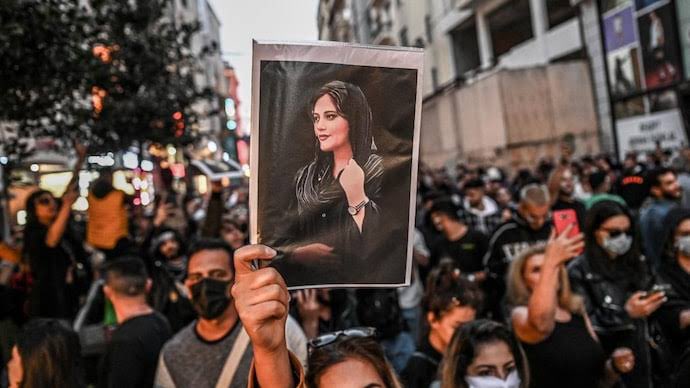
Iran disbands ‘Morality Police' after waves of anti-hijab protests

Iran has scrapped its morality police after more than two months of protests triggered by the arrest and subsequent death in custody of Mahsa Amini for allegedly violating the country’s strict female dress code, Iranian media reported Sunday.
Morality police have nothing to do with the judiciary” and have been abolished, Attorney General Mohammad Jafar Montazeri was quoted as saying by the ISNA news agency. His comment came at a religious conference late on Saturday where he responded to a participant who asked “why the morality police were being shut down,” the report said.
Iran has been struggling to quell the waves of protests linked to the dress code and said on Saturday that it was reviewing a decades-old law that requires women to cover their heads.
Women-led protests, labelled “riots” by the authorities, have swept Iran since Amini, the 22-year-old Iranian of Kurdish origin died on September 16, three days after her arrest by the morality police in Tehran for allegedly flouting the sharia-based law.
Also read: Iran’s revolution of forbidden song, dance, and kiss
Demonstrators have burned their head coverings and shouted anti-government slogans. Since Amini’s death, a growing number of women have not been observing hijab, particularly in Tehran’s fashionable north.
Guidance Patrol
The morality police —known formally as the Gasht-e Ershad or “Guidance Patrol” — were established under hardline president Mahmoud Ahmadinejad, to “spread the culture of modesty and hijab”, the mandatory female head covering. The units began patrols in 2006.
The announcement of their abolition came a day after Montazeri said that “both parliament and the judiciary are working (on the issue)” of whether the law requiring women to cover their heads needs to be changed.
Iranian President Ebrahim Raisi said in televised comments Saturday that Iran’s republican and Islamic foundations were constitutionally entrenched “but there are methods of implementing the constitution that can be flexible.”
The hijab became mandatory four years after the 1979 revolution that overthrew the US-backed monarchy and established the Islamic Republic of Iran. Morality police officers initially issued warnings before starting to crack down and arrest women 15 years ago.
Also read: Dressed and undressed in the uniform of the regimes: Sanaz Fotouhi on growing up in Iran
The vice squads were usually made up of men in green uniforms and women clad in black chadors, garments that cover their heads and upper bodies. The role of the units evolved, but has always been controversial even among candidates running for the presidency.
Norms changed under moderate president Hassan Rouhani
Clothing norms gradually changed, especially under former moderate president Hassan Rouhani, when it became commonplace to see women in tight jeans with loose, colourful headscarves.
But in July this year his successor, the ultra-conservative Raisi, called for the mobilisation of “all state institutions to enforce the headscarf law.”
Also read: Iranian protests: A win for women, a bloody nose to colour revolution
Raisi at the time charged that “the enemies of Iran and Islam have targeted the cultural and religious values of society by spreading corruption.”
In spite of this, many women continued to bend the rules, letting their headscarves slip onto their shoulders or wearing tight-fitting pants, especially in major cities and towns.
Iran’s regional rival Saudi Arabia also employed morality police to enforce female dress codes and other rules of behaviour. Since 2016, the force has been sidelined in a push by the Sunni Muslim kingdom to shake off its austere image.


